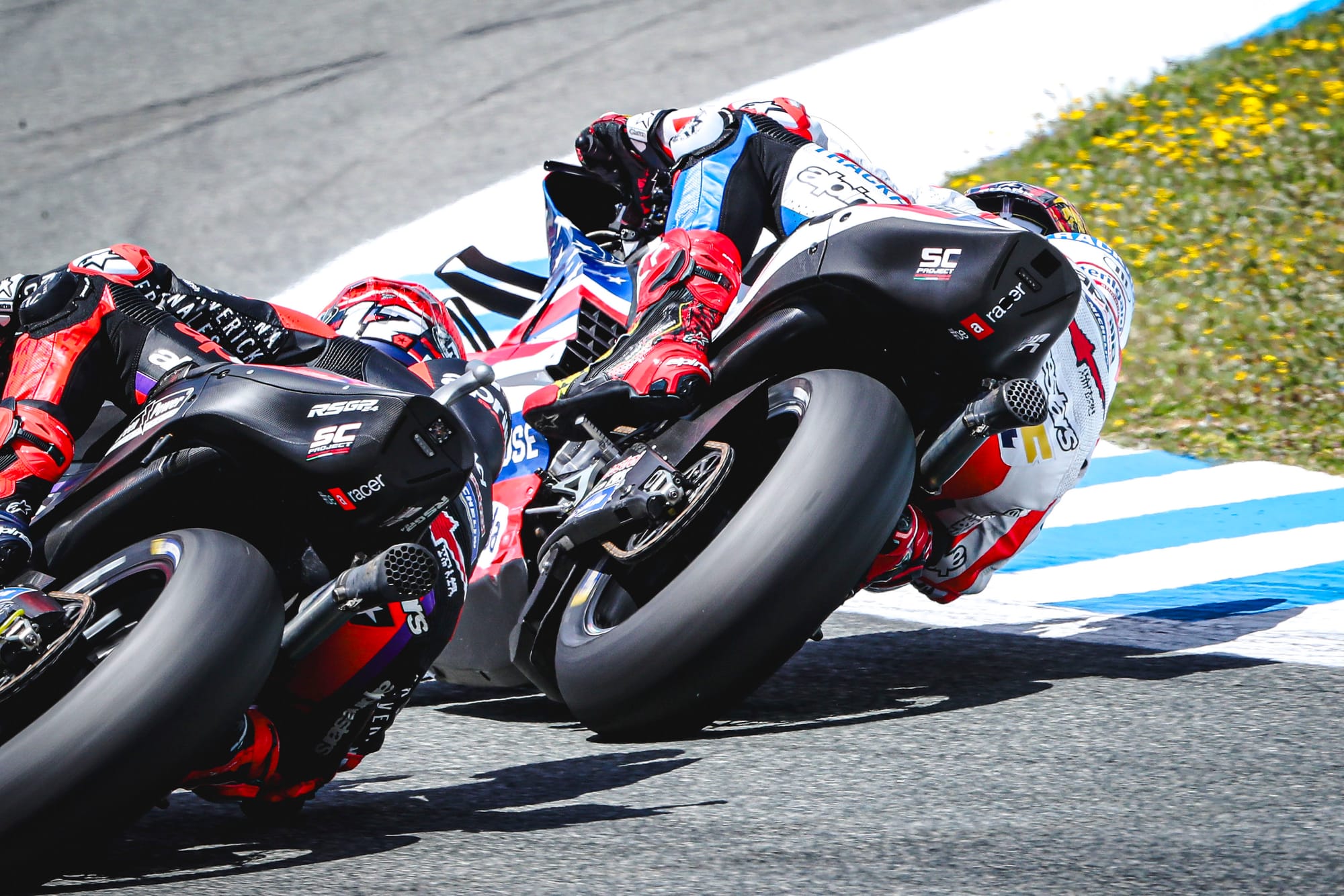MotoGP riders have given a tentative thumbs up to the 2027 rules package unveiled in the lead-up to this year's French Grand Prix - while making it clear that there is a wide variety of opinion on where the championship should be headed.
The 2027 rules are headlined by a reduction of engine capacity to 850cc, while other changes include a total ban on all ride height adjustment devices, revised aerodynamics regulations and everyone's GPS data being freely circulated between all teams.
A primary target behind the new regulations is reducing the laptimes, with it a consistent concern in MotoGP circles that the current bikes are outgrowing the bedrock of classic tracks the series is based around.
"I think, if you put everything in a package, with 35bhp less - it looks like, the Aprilia engineers told me that'll be the new engine, more or less - it will be significant changes," said Aleix Espargaro, the oldest rider on the grid.
"We are racing in the same circuits that [Mick] Doohan and [Alex] Criville were racing with the 500cc [the era that ended in 2001]. And the Moto3s are doing 500cc laptimes. So it means that the circuits are not prepared anymore.
"We can modify a little bit, but the space, it is how it is. So, we need to reduce a little bit the performance, the engineers are too intelligent, too much technology. So we need to block this a little bit. And for the show also I think it's going to be better.
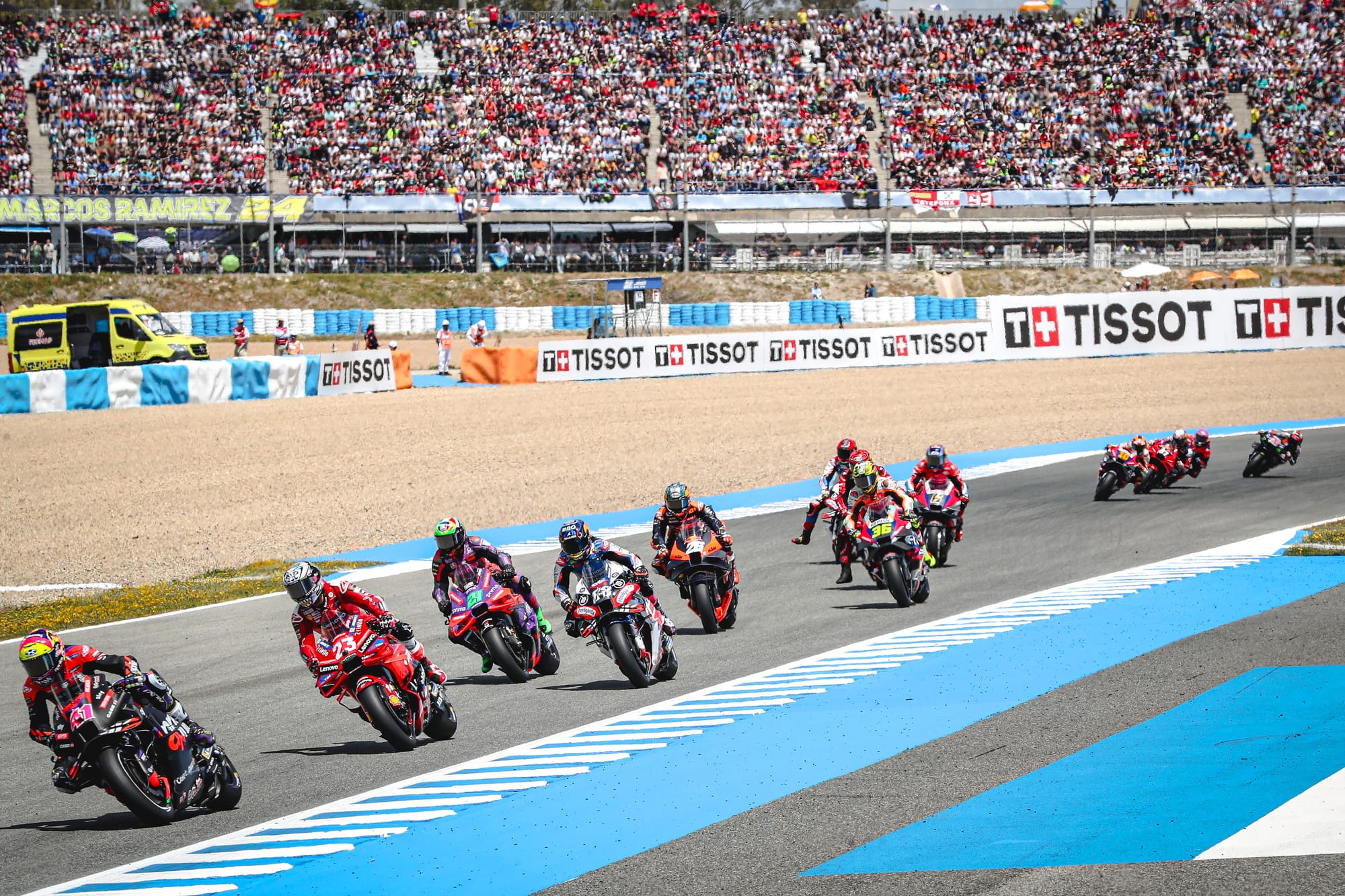
"You have to find a compromise. It's always the same thing, compromise. The people at home don't really care if we're lapping 1m31.8s or 1m33.4s. And this 1.5 seconds, the bikes will perform super good as well but the show will be much better. So you need to find a balance."
Espargaro did stress that the reduction in laptimes would need to be across the landscape of Dorna-run championships - including World Superbikes, a series which has a designated qualifying tyre and this year ran within a second of MotoGP's laptime record at Phillip Island and Barcelona.
"Obviously you can't leave the rules like this, and then keep giving qualifying tyres to Superbikes - because then the street bikes are going to beat the MotoGPs and people won't understand at home," he said. "But if you reduce the level of all the categories, to make it better for the safety and for the show, everybody's happy."
ARE AERO CHANGES ENOUGH?
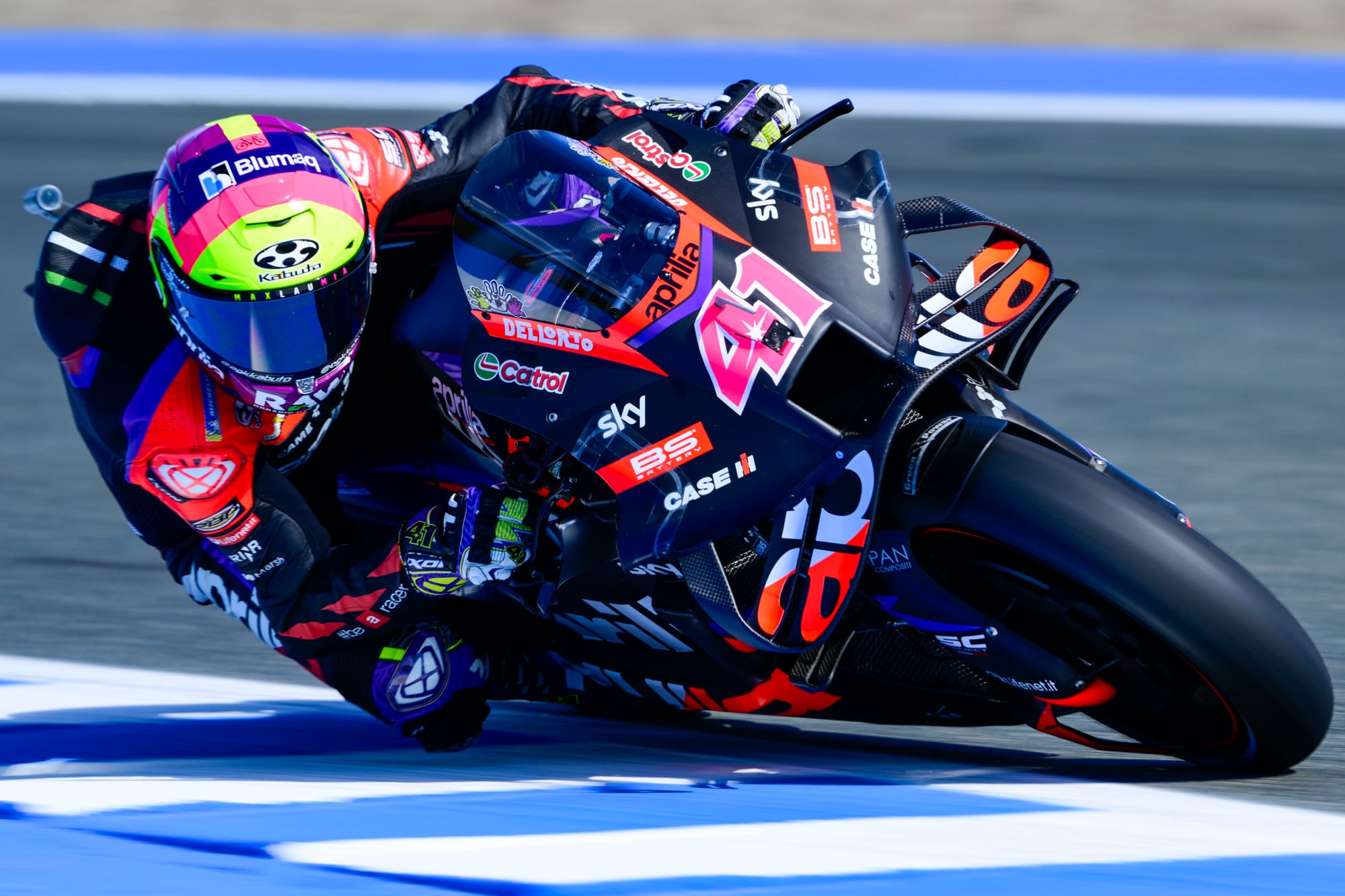
The exact nature of the new aero regulations is perhaps the biggest surprise of the new rules.
One of the changes is an obvious one: expanding the homologation range to also include the seat unit, which will curb the roaring development of rear aero, currently unbound by the general requirement to have only two aero specs homologated for the year.
But as for the specific permissions itself, there's some debate over whether a 50mm narrowing of the front fairing (from 600mm to 550mm) and pushing back its furthermost point by 50mm is enough of a change.
Espargaro said that change was "more than what it looks like". But some of his peers were not convinced.
For the riders. For the sport. For the show. :raised_hands:
— MotoGP™:checkered_flag: (@MotoGP) May 6, 2024
Welcome to the future :sunglasses:#MotoGP pic.twitter.com/XS9dsHjjLy
"I was expecting more on the aerodynamic side," said Gresini Ducati rider Alex Marquez."
The aero limitations are not limiting that much; you can still have a lot of downforce and everything," said Trackhouse Aprilia's Miguel Oliveira.
And KTM rider Jack Miller said it was well short of the change he wanted - effectively a wholesale ban on the aero appendages.
"We're at a point now where everybody's aero is pretty bloody good," he reckoned - albeit caveating it later by indicating he was mostly talking about the European Ducati/Aprilia/KTM triumvirate.
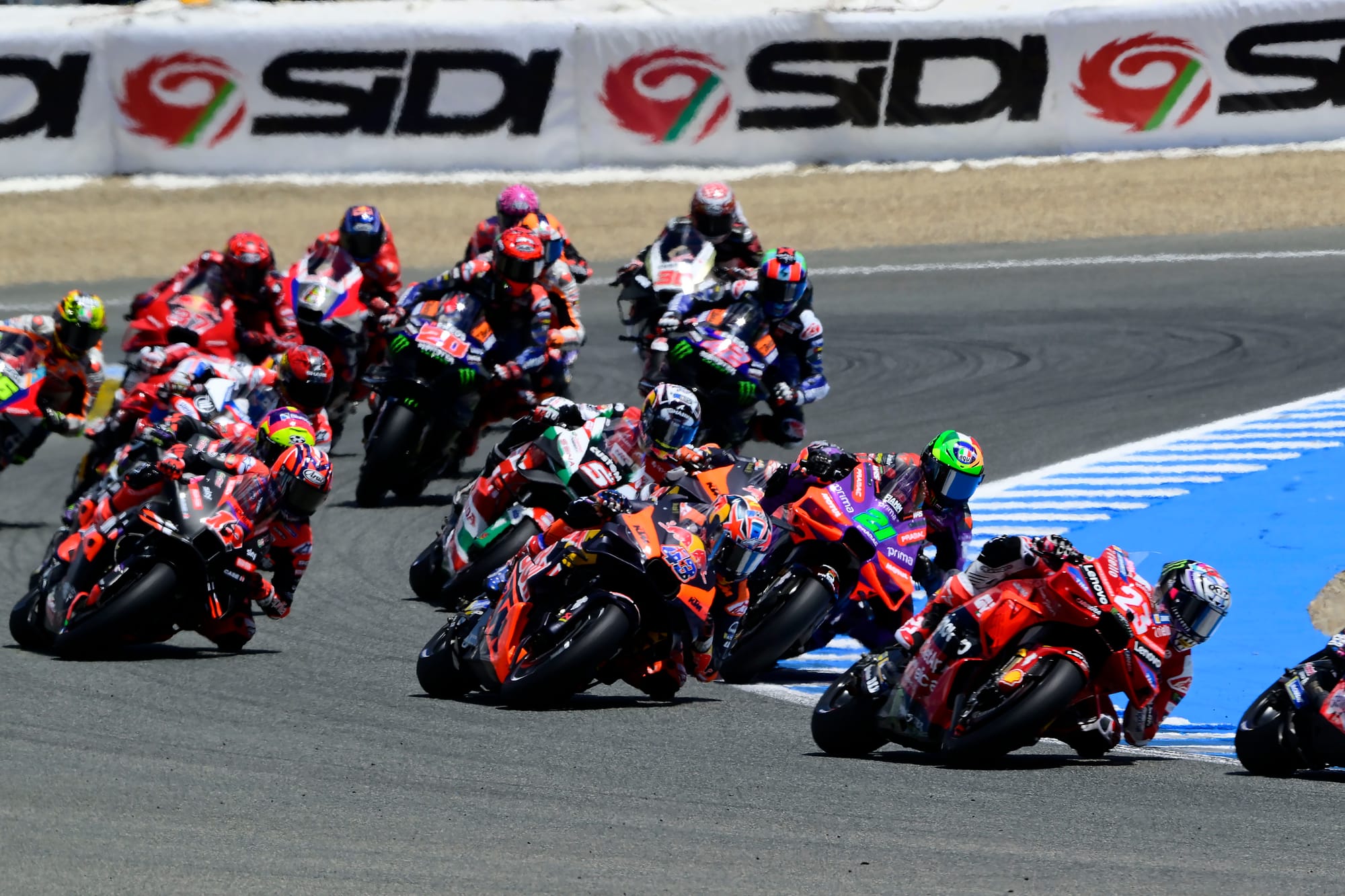
"And, having the experience of riding bikes without winglets - it's a lot more work, in terms of managing the wheelie and how you can set up your power and how you can use your power, rather than point-and-squirt kind of thing now, with the devices and the winglets.
"They make the bikes ugly. And motorcycle racing's supposed to be beautiful.
"I don't think it'd be putting anybody at a clear disadvantage nowadays, because everybody's aero is pretty bloody good, they're all spending millions of dollars to develop their fairing. So...we're kind of at a platform where we're like, 'All right, time to pack up, everyone's got nukes, so we might [as well] not use them anymore, let's get rid of them'."
And Honda rider Luca Marini event felt that this kind of restriction in aero will actually exacerbate the difference between manufacturers - "because if you are clever and smart to find a way to make the aerodynamics work in a good way, it will affect a lot".
DEVICE BAN
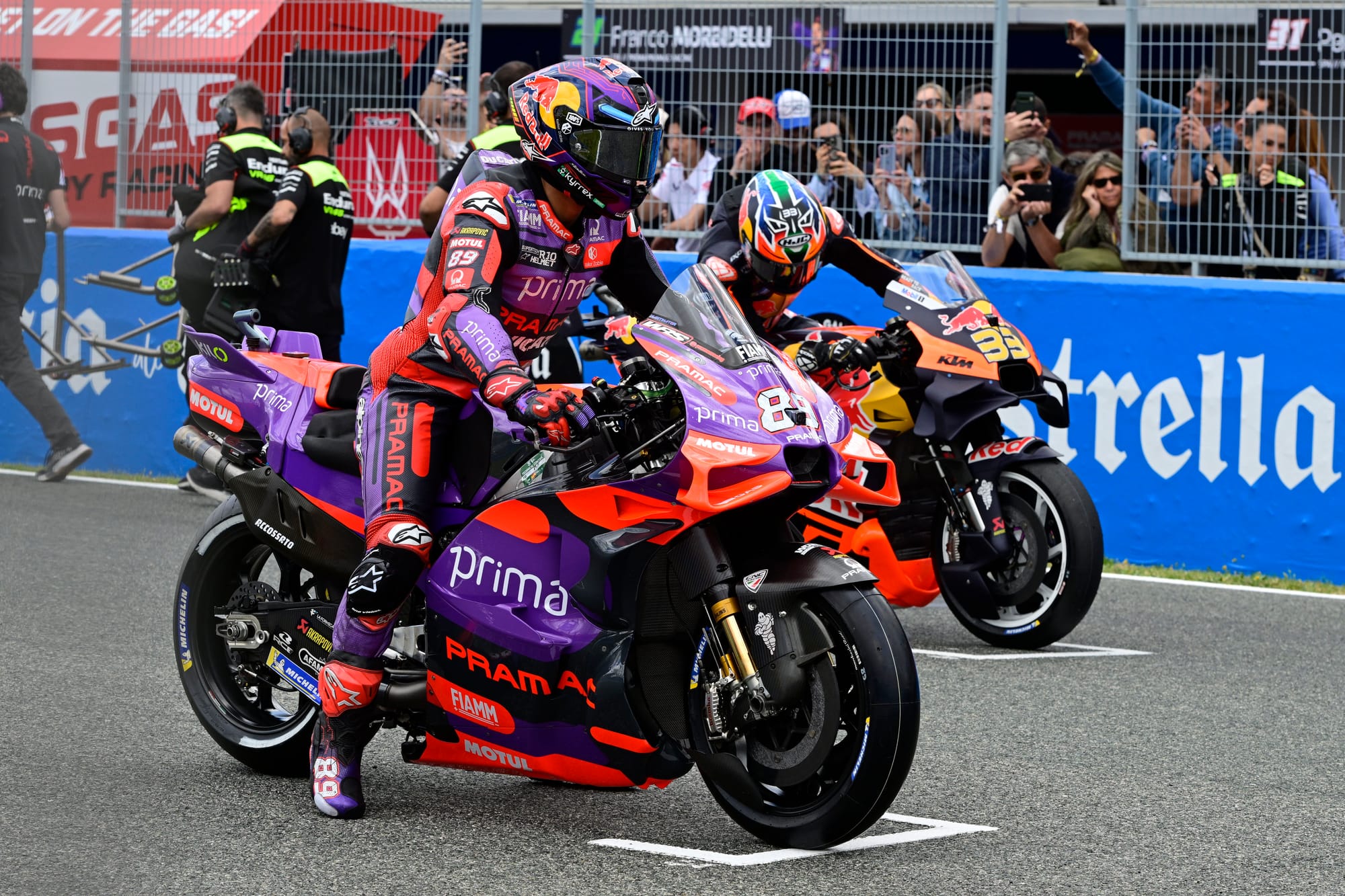
There is little consternation over the loss of ride height devices (in use at the starts and through the lap), with reactions either neutral or positive and a general belief that axing them will put more control into riders' hands.
Tech3 Gas Gas rider Augusto Fernandez reckoned that the combination of a reduced aero effect from rival bikes and not having to think about when to activate and deactivate the ride-height adjusters will allow riders to ride more freely, and Honda's Joan Mir pointed out that it will create much more variance in terms of the quality of starts.
For Espargaro's Aprilia team-mate Maverick Vinales, it will "help the riders that have more technique".
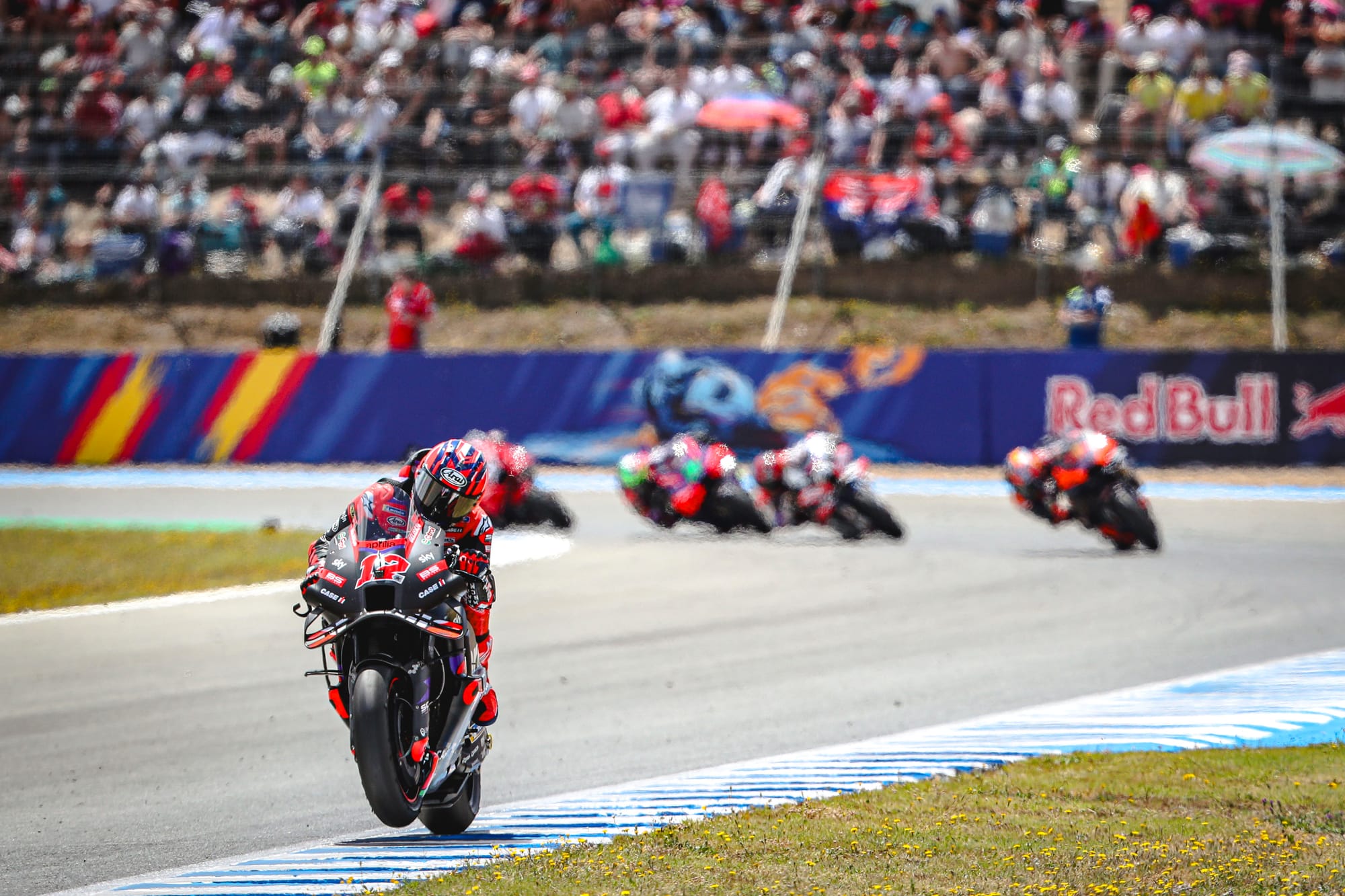
"It's not the same right now because you just open full throttle and see if the bike pushes and whatever. Without that [ride height adjustment] you have a lot of wheelie, and it will change a lot the riding style so that you cannot open full gas," said Vinales.
"It will change a lot the style, and for me the level of the rider will mean more in terms of laptime."
Marquez likewise described it as "something nice" - but admitted he had wondered whether it could've been kept on as an overtaking aid.
"I was expecting something like the DRS in Formula 1, that you could use it when you have someone in front to overtake, or something like this.
"But they've taken it out, and less things on the bike will be better for the riders.
"A little bit too late, because until 2027 we can speak 200 times about it!"
GPS BACKLASH
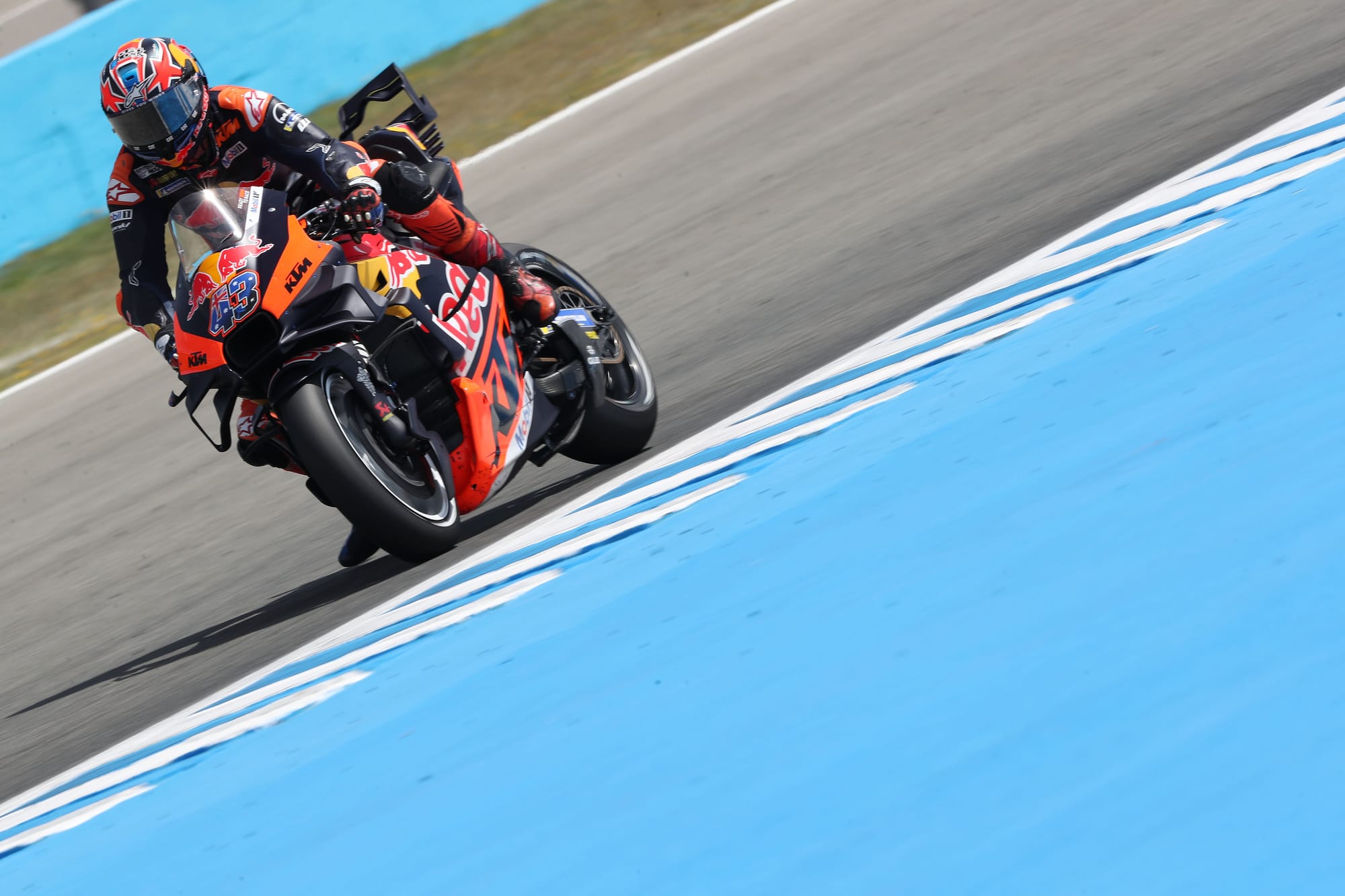
MotoGP described the move to make GPS data from all riders available to all teams as something that "will help make the sport safer and will increase the level of insight available to fans around the world".
That latter aspect of it - the broadcasting angle - is thought to be the primary motivator, with potentially levelling the playing field a bonus.
But there was at least one rider who really wasn't impressed.
"The only thing I didn't like was the whole 'GPS data available to everybody'. What the f**k is that for?" Miller vented.
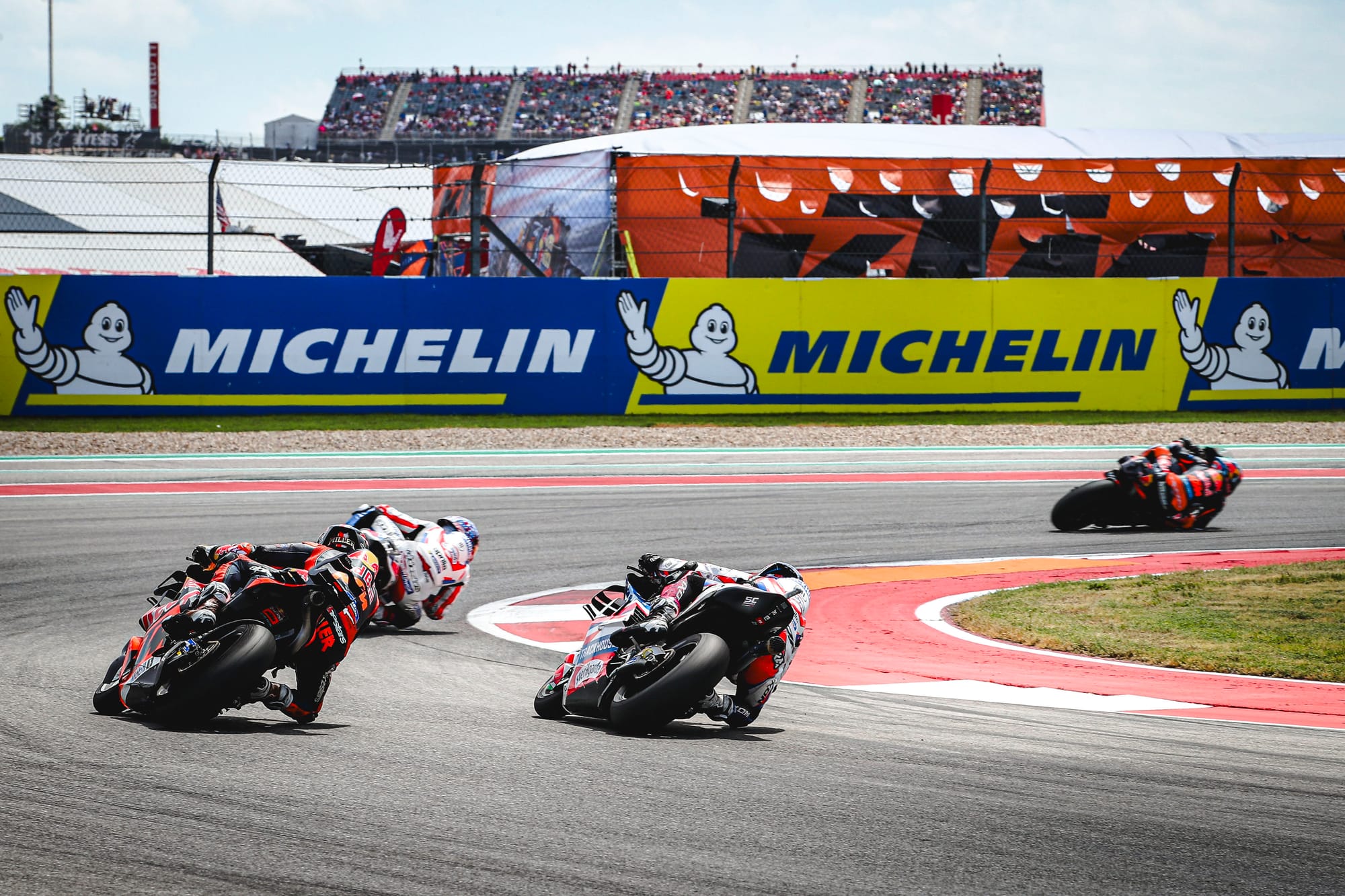
"It's motorcycle racing, the whole idea is to get the edge over your competition - not tell them exactly where you're going faster.
"It's the whole guesswork of it, that's what makes the sport beautiful.
"I don't understand how that one made it past the manufacturers, but it did."
TOO BIG AN ENGINE CHANGE?
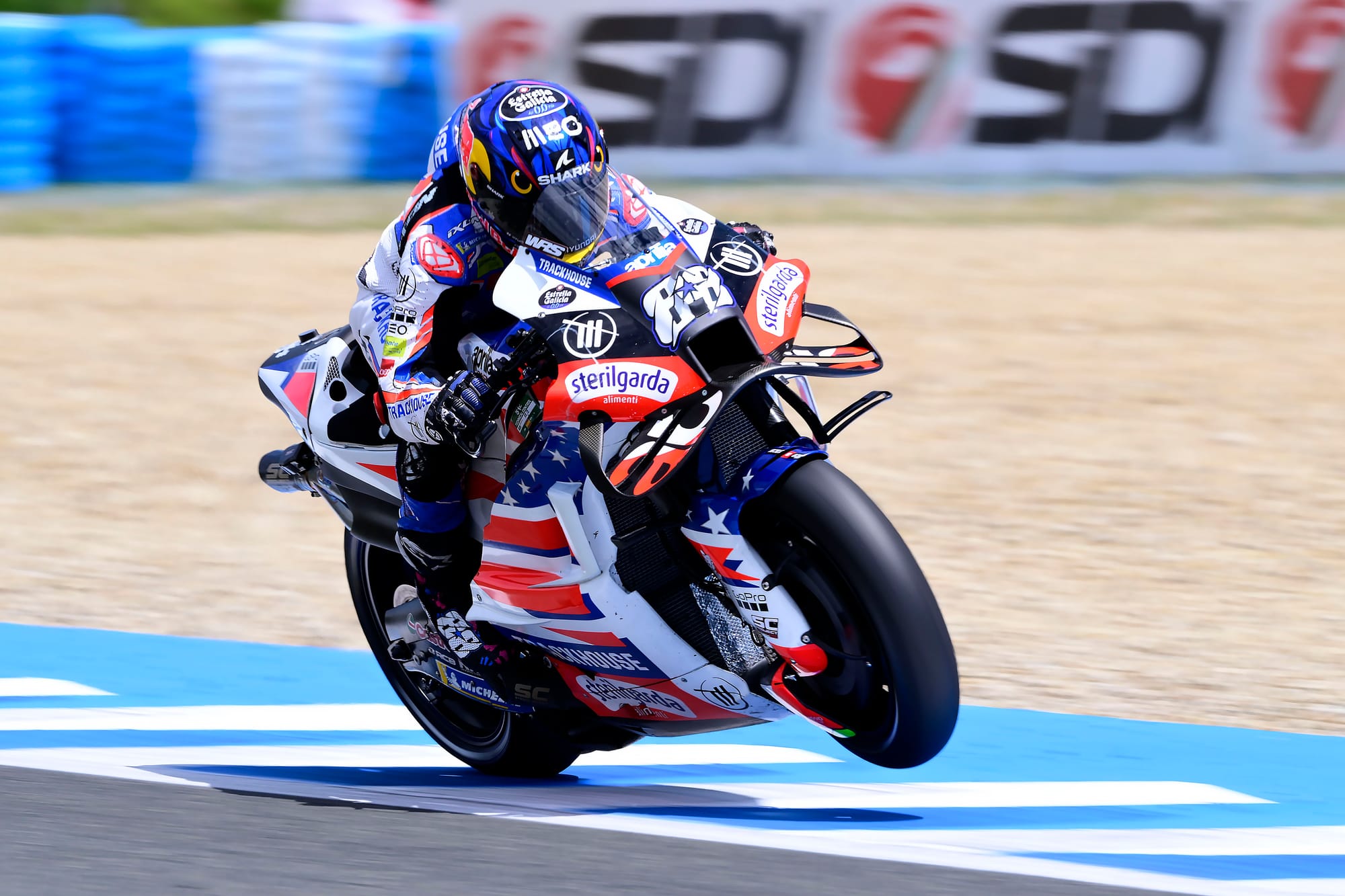
MotoGP's last experiment with reducing engine capacity - going to 800cc from 990cc in 2007 - was not exactly a success, and was effectively undone five years later. But riders sounded generally positive about the impending switch to 850cc, with Miller excited about how the bikes will sound.
Here too, though, there was somewhat of a dissenting voice. Oliveira said that he "was not disappointed, but expected something different".
"To go to 850cc, let's say it's not my favourite thing out of all the news," he said.
"At least keep 1000cc. The [100% sustainable] fuel thing for me is also hard to understand. It's expensive, the price per litre. Also you'd have to have some companies certifying that for all the constructors, that has some costs applied to that.
"And also, developing a completely new way of making an engine go, with the 850cc...I think we have such a huge base and good experience with 1000cc, I think we could limit the costs much more, applying some kind of different technology to 1000cc than going to 850cc. But I'll be happy to ride one of them, no problem!"
WILL DEVELOPMENT CHANGE EVERYTHING?
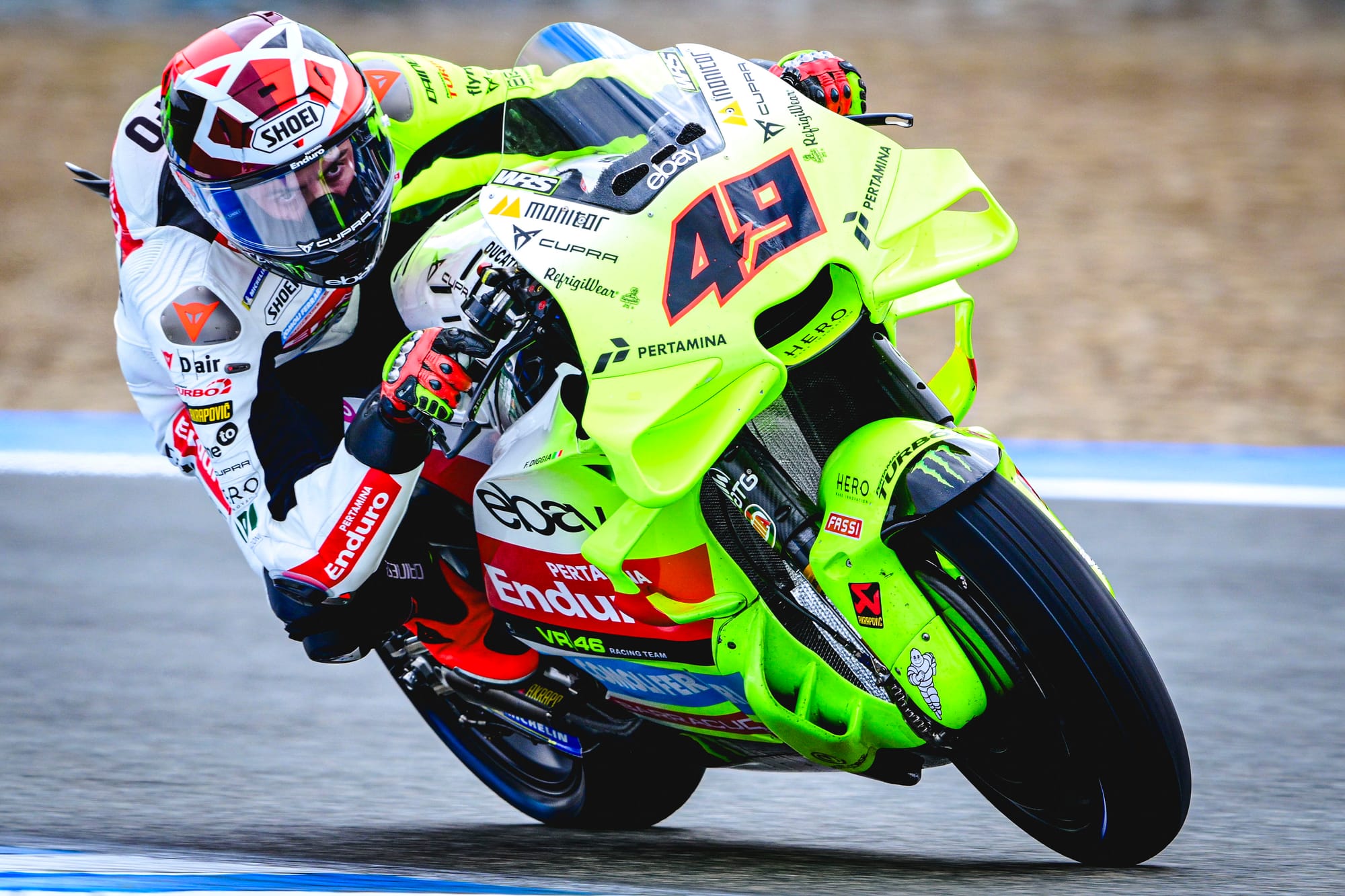
There is, ultimately, a philosophical difference between many of the riders on what they want MotoGP to be and what they want a MotoGP bike to feel like.
Some are more traditionalists in that sense. VR46 Ducati's Fabio Di Giannantonio is one rider who made it clear he was excited by the continuous technological improvement in the category and how advanced the bikes were getting - even while acknowledging that there had been a detriment to the quality of racing.
The 2027 regulations have been positioned as a step back intended to address that.
"I'm loving the MotoGP at the moment," said Di Giannantonio. "The aero is fantastic, the devices and stuff, it's like Formula 1 on two wheels. But also for the future will be interesting to see if these new regulations make us ride closer and have closer battles, because at the moment it's a bit tough.
"I think in the future we will have some complexity [still]. In the beginning everything will be more easy, more calm, but as soon as the engineers will understand more, I think we will find some way to have crazy things on the bike again."



